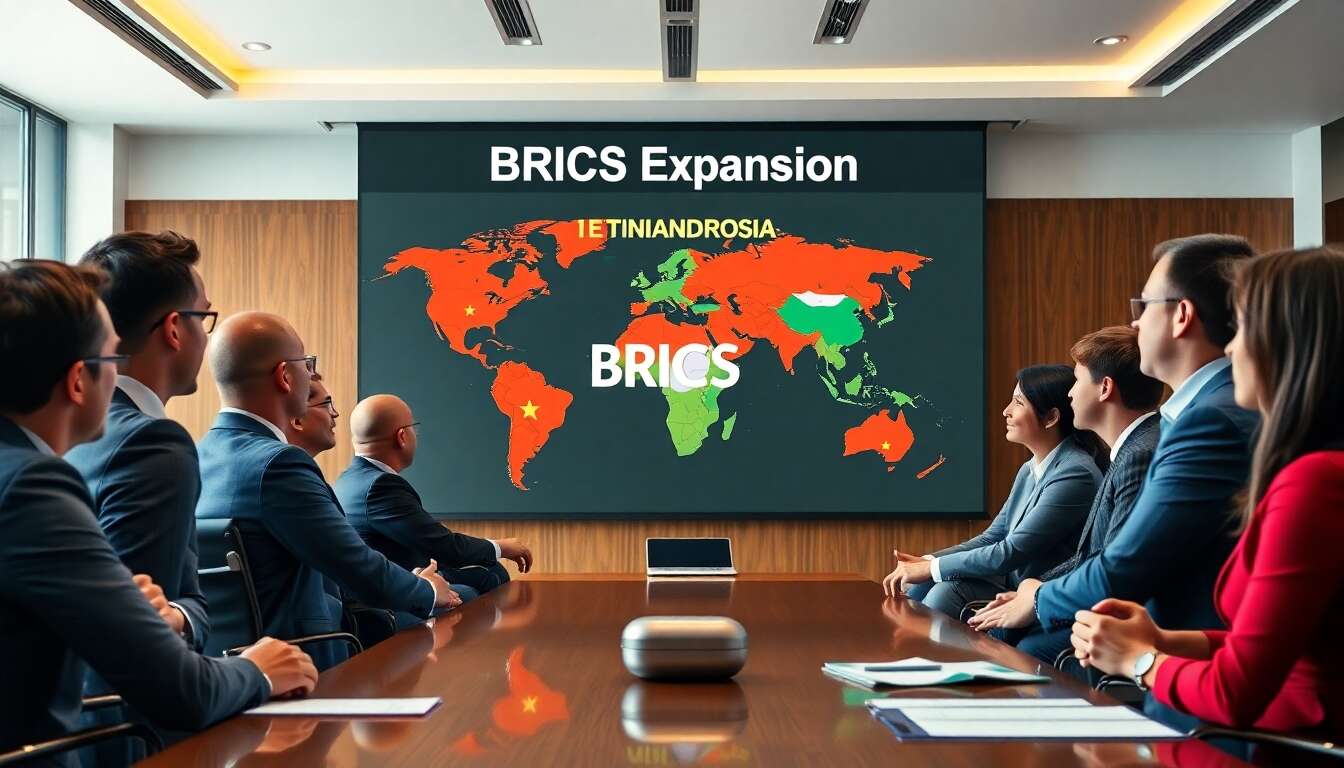At the dawn of 2025, the discussion surrounding a common currency for the BRICS countries (Brazil, Russia, India, China, and South Africa) is taking a significant turn. Since their emergence in the early 2000s, BRICS nations have strived to restructure the global economic order, and the idea of a common currency emerges as a potentially powerful symbol of this transformation.
Understanding the Role of BRICS in the Global Economy
Historical Context
The establishment of BRICS marked a pivotal shift in the global economic landscape. These five countries—Brazil, Russia, India, China, and South Africa—represent emerging powerhouses with considerable influence. Historically, they sought to challenge the dominance of established economic powers by creating a unique bloc characterized by rapid economic growth and vast population sizes.
Economic Influence
BRICS countries hold significant sway in the global economy. Collectively, they account for more than 40% of the world’s population and nearly 25% of global GDP. This marks them as key players in setting economic policies and decisions that affect worldwide economic trends.
Trade and Investment Contributions
The BRICS nations engage in substantial trade and investment activities, which solidify their role as critical economic contributors. Consider these figures:
| Country | GDP (Billions USD) | Population (Millions) |
|---|---|---|
| Brazil | 2,055 | 216 |
| Russia | 1,780 | 146 |
| India | 3,170 | 1,428 |
| China | 14,860 | 1,408 |
| South Africa | 351 | 60 |
These data illustrate the substantial economic capabilities of the BRICS countries. They collectively strive to leverage these capabilities to create a more balanced global economic environment.
Moving forward, understanding the transition of BRICS into a more integrated bloc will reveal more about their strategies and ambitions in the global arena.
The Evolution of BRICS Toward a More Integrated Bloc
Initial Cohesion Efforts
In the initial stages, BRICS focused on building strategic partnerships amongst themselves. They implemented institutions like the New Development Bank to support infrastructure and sustainable development projects, which fostered cooperation.
Recent Developments
The 2023 Johannesburg summit marked a pivotal moment with the announcement of six new countries joining BRICS. This expansion, including nations like Saudi Arabia and Argentina, augments the economic clout of the group and paves the way for deeper integration.
Challenges to Integration
Despite efforts to unify, internal differences among BRICS countries present substantial obstacles. Political diversity and economic disparities remain challenges. Nonetheless, the mutual goal of economic growth and de-dollarization acts as a cohesive force.
As BRICS expands and seeks further integration, its growing influence is poised to impact the global economy in numerous ways.
Impact of the BRICS Expansion on the Global Economy

Economic Outreach
With new members, BRICS is ideally positioned to extend its economic outreach. The inclusion of additional diverse economies could enhance global trade networks and supply chains.
Global Power Dynamics
The enlargement of BRICS alters global power dynamics. By increasing their share of global GDP and geopolitical influence, BRICS nations could shift economic paradigms and reduce the historical dominance of Western powers.
Enhanced Economic Stability
The diversity and collective strength of BRICS aim to promote economic stability amidst global uncertainties. By creating a platform for collaboration, BRICS seeks to foster an environment that minimizes economic vulnerabilities and responds to international market fluctuations.
Exploring further, we’ll observe how BRICS’ strategic role in international commerce can redefine trade relationships worldwide.
The Strategic Role of BRICS in International Trade
Trade Policies and Agreements
BRICS actively engages in developing trade policies and agreements that reflect their collective economic interests. Crafting bilateral and multilateral accords facilitates intragroup trade while expanding access to emerging markets.
Resource Distribution
The BRICS countries vary widely in their resource endowments, allowing for mutually beneficial exchanges that optimize resource efficiency and availability. Such exchanges contribute to global trade equilibrium.
Promoting a New Trade Model
Through active participation and innovation, BRICS endeavors to promote a model that emphasizes sustainable practices and economic diversity. This model challenges existing norms and seeks to rectify imbalances in international trade relations.
Amid these strategic movements, the emergence of Brics Money holds the potential to reshape the monetary systems that underpin global commerce.
Brics Money: A Tool for De-dollarizing the World Economy

Concept and Potential
The introduction of Brics Money symbolizes a significant milestone in the quest to de-dollarize. This prospective currency aims to facilitate trade among member countries while reducing dependency on the U.S. dollar.
Monetary Independence
By establishing Brics Money, member nations aspire to attain monetary independence. This initiative empowers them to exercise greater control over their economic policies and align them with regional development goals.
Overcoming Challenges
Despite its promise, adopting Brics Money encounters significant challenges. Coordinating monetary policies across diverse economies with distinct financial systems remains complex, necessitating robust mechanisms to ensure successful implementation.
Examining the economic implications of a prospective BRICS currency sheds light on its possible advantages and drawbacks in a world currently dominated by the US dollar.
Economic Implications of a New BRICS Currency
Financial Autonomy
A BRICS currency could enhance financial autonomy and promote economic sovereignty. By demarcating economic policies from external influences, BRICS nations aim to achieve greater developmental progress.
Benefits and Concerns
The establishment of a BRICS currency offers both advantages and concerns. Potential benefits include reducing foreign exchange risk and fostering stability, while concerns involve managing inflation and ensuring cross-border acceptability.
Global Economic Integration
As a catalyst for integration, a BRICS currency could streamline international transactions, reducing costs and time delays. This contributes to enhanced global trade efficiency and economic cooperation.
To comprehend the effect of Brics Money on global finance, we must juxtapose it with the existing monetary standard, the U.S. dollar.
Comparison: Brics Money and the US Dollar

Exchange Rate Dynamics
The exchange rate dynamics between Brics Money and the dollar will play a crucial role in shaping global trade. Examining their volatility and stability provides insights into economic predictability.
Adoption and Acceptance
The adoption of Brics Money hinges on its acceptance in global markets. Sustaining confidence in its value is vital for gaining traction among international stakeholders and traders.
Comparative Strength
- Backing: While the U.S. dollar is supported by a robust economy, Brics Money requires strong political and economic backing.
- Influence: The dollar’s global influence is entrenched, whereas Brics Money aspires to establish itself as a viable alternative.
- Liquidity: Dollar liquidity remains high, posing a challenge for the emergent BRICS currency.
As we analyze these elements, it becomes evident that the path to a pervasive BRICS monetary system involves navigating both complexities and opportunities for member states.
Challenges and Opportunities for BRICS Member Countries
Economic Collaboration
Enhancing economic collaboration among BRICS countries entails overcoming policy disparities. Successfully navigating these differences provides an opportunity to cultivate economic resilience within the bloc.
Political Coordination
Political coordination challenges persist as diverse governance models conflict within BRICS. Achieving consensus on economic policies necessitates delicate diplomacy and negotiation.
Prospective Opportunities
The integration and cooperation among BRICS countries can unlock opportunities for addressing common challenges, such as sustainable development, digital transformation, and regional security.
The possibilities of Brics Money hold profound implications: an initiative with the potential to reshape global economic dynamics, provided that member states successfully harness its strategic potential.
Ultimately, the evolving narrative of BRICS and the prospective Brics Money presents a recalibration of global economic forces. As the bloc continues to strengthen and possibly introduces a new currency, the intricate ballet of challenges and opportunities could redefine international economic relationships and reshape the future of trade and finance globally.



